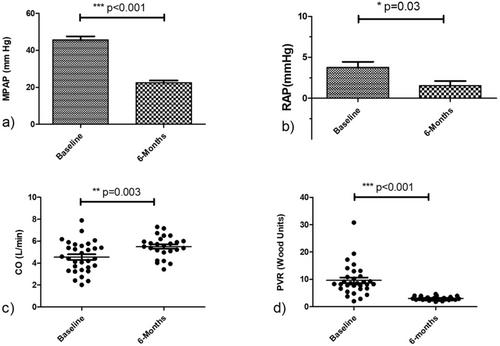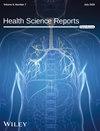Improvements in Hemodynamics and Right Heart Remodeling Following Balloon Pulmonary Angioplasty Treatment in Patients With Chronic Thromboembolic Pulmonary Hypertension: A Retrospective Study
Abstract
Background and Aims
This study aimed to evaluate the hemodynamic alterations and right heart remodeling dynamics in patients with inoperable chronic thromboembolic pulmonary hypertension (CTEPH) undergoing treatment with balloon pulmonary angioplasty (BPA).
Methods
This retrospective cohort study involved a cohort of 31 patients with a confirmed diagnosis of CTEPH. Comprehensive clinical evaluations were systematically performed before BPA, and at 3 and 6 months following the procedure.
Results
Significant clinical progress was evidenced by the uplift in the percentage of patients achieving WHO-FC II, escalating from 19.35% at baseline to 51.61% at 6 months after BPA (p = 0.003). NT-proBNP levels significantly dropped from a median of 614.6 to 69.9 pg/mL (p < 0.001). Hemodynamic assessments showed significant decreases in mean PAP from 45.53 ± 11.19 to 22.56 ± 5.81 mmHg (p < 0.001) and PVR from 8.33 to 2.86 WU (p < 0.001). Echocardiographic analysis revealed substantial reductions in the right atrial area (RAA, from 20.29 ± 7.55 to 16.79 ± 4.82 cm2, p < 0.001) and right ventricular internal diameter (RVID, from 4.13 ± 0.79 to 3.68 ± 0.59 cm, p = 0.001) at the 3-month interval post-BPA. These improvements were sustained or even enhanced by the 6-month mark, with RAA and RVID further diminishing (to 14.46 ± 3.78 cm2 and 3.29 ± 0.54 cm, respectively; both p < 0.01). The TAPSE/PASP ratios showed progressive improvement from baseline (0.32 ± 0.13) to 3 months (0.42 ± 0.13) and continued to improve at 6 months following BPA (0.50 ± 0.11, p = 0.04 compared to 3 months post-BPA).
Conclusion
BPA has significantly ameliorated clinical conditions, hemodynamic profiles, and initiated a continued reversal in right heart remodeling in patients with CTEPH.


 求助内容:
求助内容: 应助结果提醒方式:
应助结果提醒方式:


